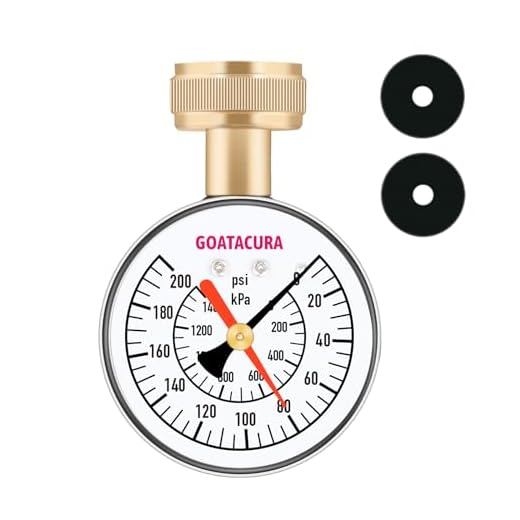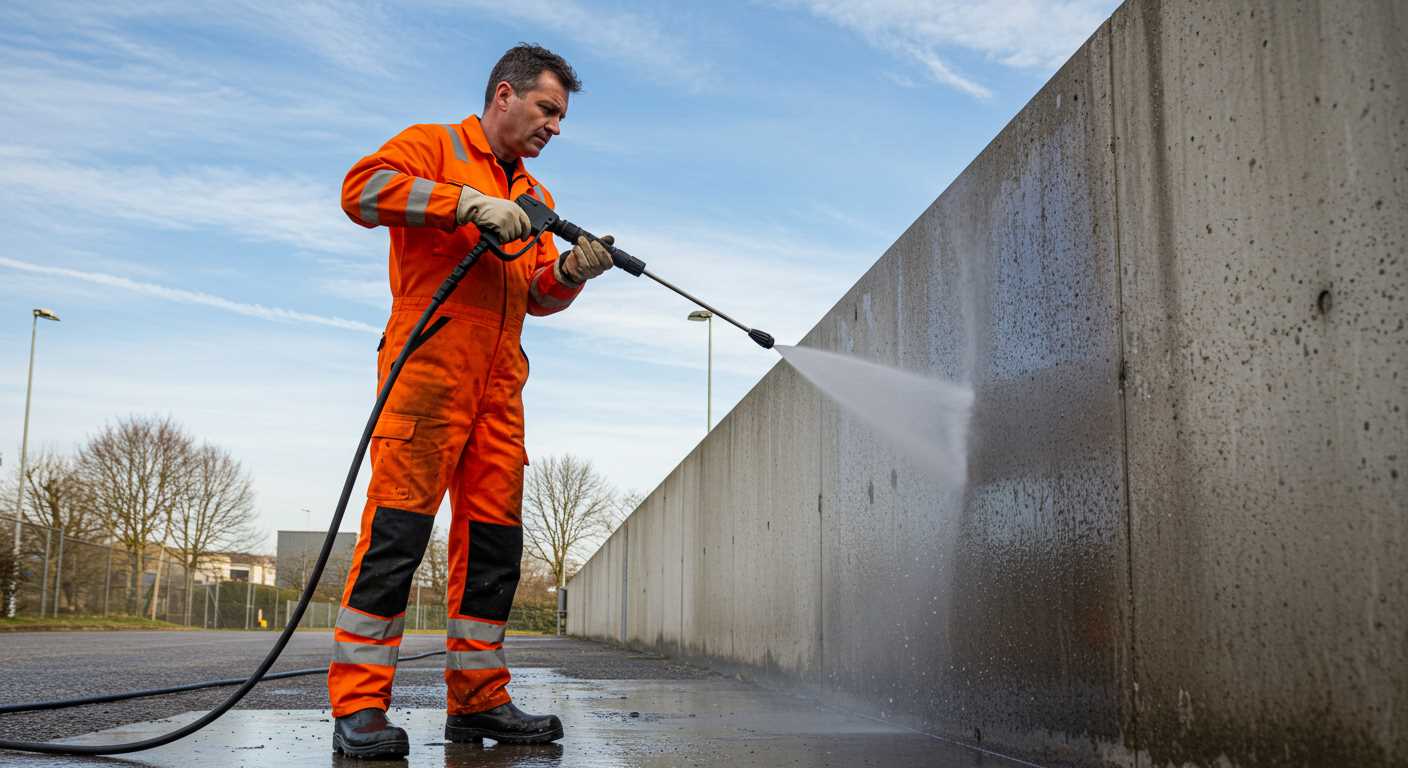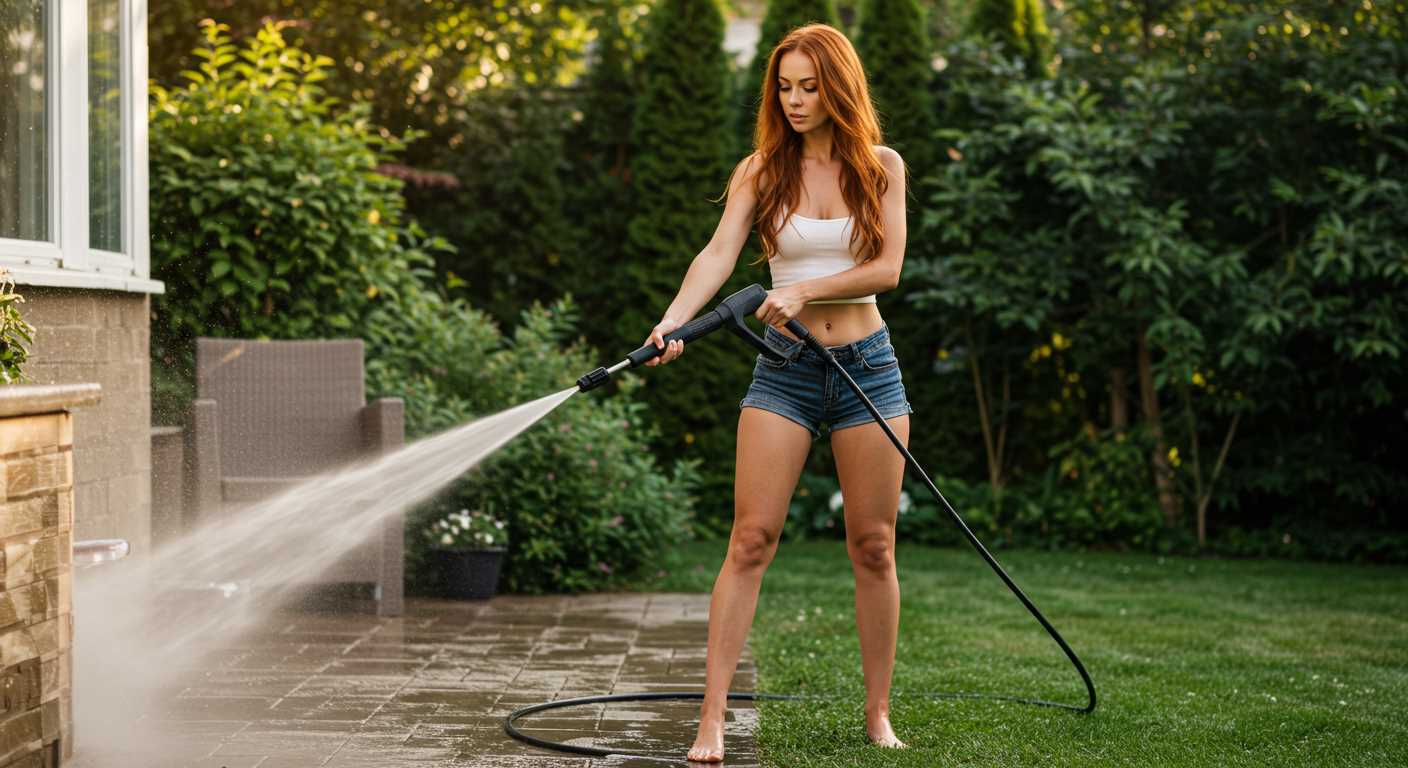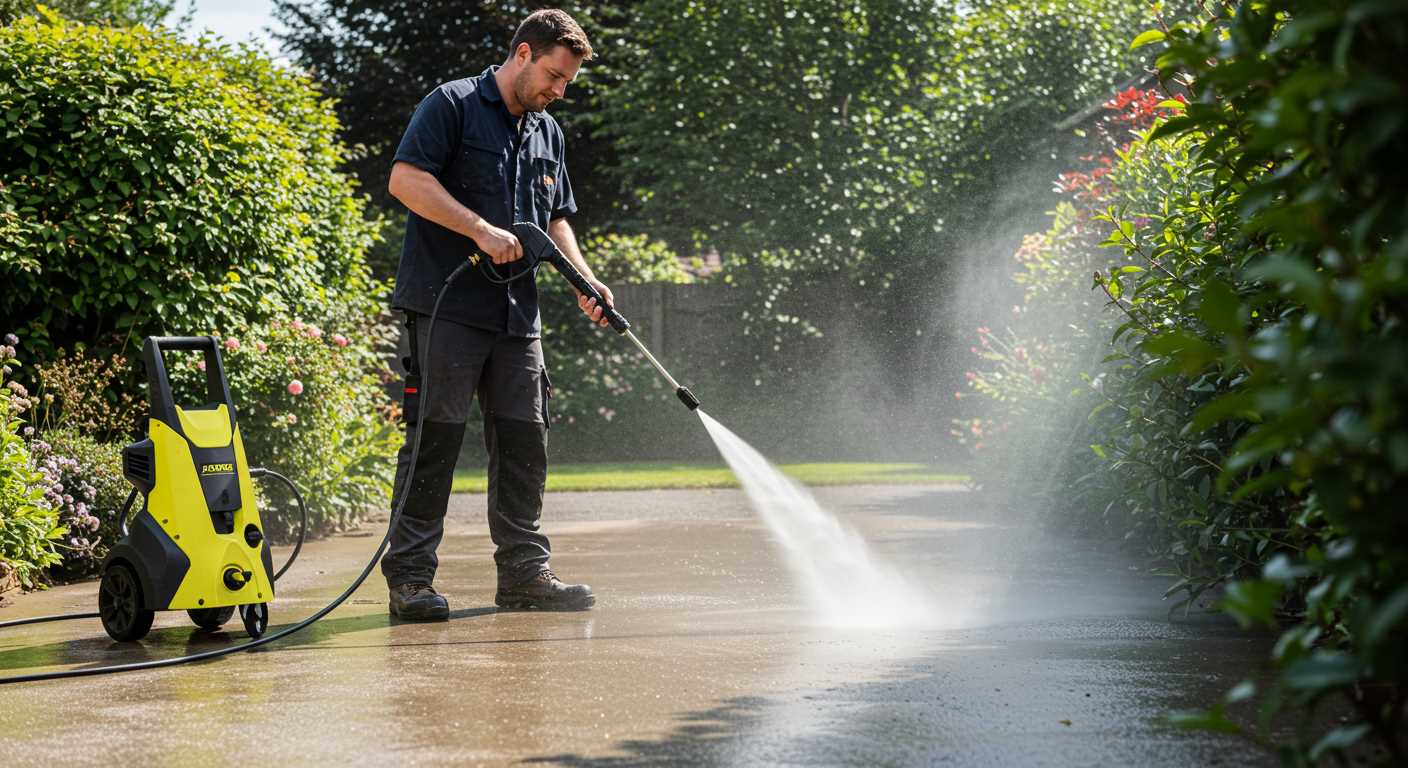



Before you pull your hair out, check the inlet filter for clogs. This fine mesh component can easily become blocked with dirt, debris, or mineral build-up, severely restricting water flow. You can clean or replace it quickly–don’t underestimate this small part’s impact.
If cleaning the filter does not resolve the issue, inspect the high-pressure hose for kinks or leaks. Even minor damage can significantly affect the water flow. Look closely at the connections too; ensure they are tightly fitted and free of wear.
Another common issue lies in the nozzle selection. Using a nozzle with too wide a spray pattern may lead to a decrease in force. Switch to a narrower nozzle to concentrate the water stream. Additionally, verify that the nozzle itself isn’t clogged, as this can diminish performance.
Don’t forget to check the pump’s operation. If the device is making unusual noises or is vibrating excessively, you might be dealing with an internal failure. Regular maintenance and checking the oil levels can prevent long-term damage. Make certain that the machine is serviced according to the manufacturer’s recommendations to keep it functioning optimally.
Lastly, reviewing the specifications of your unit against the tasks you are performing can be revealing. Not all equipment is designed for heavy-duty use, and attempting to do too much may lead to apparent underperformance. Ensure your choice aligns well with the intended purpose.
Diagnosis Steps for Insufficient Output
Begin with checking the water supply. Ensure the hose isn’t kinked or blocked, and the water source should deliver adequate flow. A low-output tap can cause significant issues. If everything appears normal, inspect the inlet filter. A clogged filter hampers the flow into the unit.
Inspecting Nozzle and Hose
Next, examine the nozzle. An obstructed or incorrectly sized nozzle will affect the intensity of the stream. Clean or replace it if necessary. It’s also wise to evaluate the condition of the hose. Cracks or punctures can lead to loss of force. Replace any damaged sections promptly.
Malfunctioning Components
If no visible issues are found, the internal components may require attention. Check the pump for signs of wear or damage. A faulty seal or piston can dramatically reduce output. Consulting the manufacturer’s manual for troubleshooting advice can guide repairs or replacements effectively.
Clogged Nozzle: How to Inspect and Clean
First, disconnect the equipment from the power source and water supply. This ensures safety during the inspection process. Remove the nozzle from the lance by twisting it counter-clockwise. Visual inspection is essential; check for any visible debris or damage.
Inspection Process
Utilise a small flashlight to examine the nozzle opening closely. If you spot any obstructions, a thin wire or needle can be helpful for clearing blockages. Gently insert the wire to dislodge stubborn particles without damaging the nozzle interior. Rinse the nozzle with clean water after this action to eliminate any loosened debris.
Cleaning Technique
For thorough cleaning, create a solution using warm water mixed with a mild detergent. Soak the nozzle in this solution for approximately 15 minutes. After soaking, use an old toothbrush to scrub away any residue. Rinse with clean water again. Re-attach the nozzle, reconnect everything, and test to ensure the flow has returned to normal. Performing this routine maintenance can significantly enhance performance.
Water Supply Issues: Ensuring Adequate Flow

Verify the water source by checking the hose connection and ensuring it is fitted securely to the tap. An improperly connected hose can restrict water flow, leading to decreased performance.
Examine the hose for kinks or blockages. A damaged or tightly bent hose can severely limit water delivery. Consider replacing any frayed or damaged sections for optimal results.
Assessing Water Supply Pressure
Use a pressure gauge at the tap to measure the supply pressure. Ideally, the reading should be between 20-100 PSI for optimal performance. If the pressure falls below this range, consult your local water supplier.
Filtration and Sediment Accumulation
Check for and clean any filters attached to the washer. Sediment can accumulate and obstruct regular water flow, impacting equipment efficiency. Regular maintenance of these filters ensures consistent performance across multiple uses.
Pump Problems: Identifying Faults and Solutions
First, check for any visible leaks around the pump seals and fittings. A damaged seal can significantly reduce water output. In this case, replacing the O-ring or seal might restore strong performance.
Next, inspect the pump itself for unusual noises, which may indicate mechanical failure. A bearing that is worn or a crankcase that is compromised often leads to underperformance. If this is the case, you might need to take the unit to a service centre for repair or, if cost-effective, consider a replacement.
Air in the System
Air entering the system can cause irregular performance. To eliminate trapped air, allow the machine to operate without engagement on the trigger until a steady flow is observed. This process might take a few minutes and ensures proper priming of the pump.
Wear and Tear Assessments
Over time, internal components of the pump can experience wear, which influences operation. Inspect the piston, valves, and cylinders for signs of excessive wear or corrosion. If components appear compromised, replacing them with original manufacturer parts can restore optimal functionality.
Regular maintenance, including appropriate lubrication and fluid changes, can prolong the lifespan of the pump and promote consistent results. Avoid neglecting routine checks and servicing to maintain performance levels.
Incorrect Hose or Fittings: Choosing the Right Equipment
Opting for quality hoses and fittings can significantly boost your equipment’s performance. Always select hoses that match the specific flow rate and diameter requirements of your model.
- Diameter: A hose with a smaller diameter can restrict water flow. Ensure the diameter aligns with manufacturer specifications.
- Length: Longer hoses can lead to pressure drop. Keep the length minimal while allowing for necessary reach.
- Material: Durable materials can withstand high pressure and avoid kinks–opt for rubber or reinforced options.
Choosing the right fittings is equally crucial. Ensure connections are tight and free of leaks. Leaking fittings can cause significant drops in effectiveness.
- Connection Type: Verify that the fittings match the outlet specifications of your unit and the hose type. Mismatched fittings can lead to inefficiency.
- Seals and Washers: Inspect and replace worn seals. Damaged washers can allow leaks, further reducing output.
Regularly inspect the entire system for any wear or damage. Address issues immediately to maintain optimal function. Investing in quality equipment pays off through improved performance and longevity.
Setting Modifications: How to Adjust Your Equipment
To enhance the force of your device, locate the pressure adjustment knob or lever on the pump. This is typically situated near the outlet where the water exits the unit. Twist or pull it to increase the output strength. Always refer to the user manual for specific guidelines on adjustments tailored to your model.
Understanding Adjustment Types
Some machines offer a dual-setting feature, allowing toggling between low and high outputs. If your device includes this option, ensure you select the appropriate mode for your cleaning task. For tougher stains, switch to a higher setting, while lighter jobs can benefit from a lower one.
Inspection for Optimal Performance

After making adjustments, check the quick-connect fittings for secure attachments. Loose connections can lead to drops in performance. Also, observe the gauge if your model incorporates one. This will provide real-time feedback on the current output, guiding necessary tweaks.
Regularly monitor the condition of the pressure adjustment mechanism. Wear and tear can impact its functionality, leading to inefficiencies. If you notice difficulty in modifying the settings or erratic readings, it may be worthwhile to consult a technician. Consistent care and attention will ensure durability and consistent operation.
Maintenance Tips: Preventing Future Low Pressure Issues

Regular cleaning of filters should be part of your routine. Clogged filters restrict water flow, decreasing performance. Inspect and clean all filters monthly to ensure optimal operation.
Check and Maintain Hose Integrity
Hoses age and can develop leaks. Regularly inspect for cracks, abrasions, or other signs of wear. Replace damaged hoses immediately, ensuring a secure connection to the water source.
Routine Pump Care
The pump is crucial for water delivery. Change the oil according to the manufacturer’s guidelines and keep it lubricated. Avoid running the equipment without water, as this can cause significant damage.
| Maintenance Task | Frequency |
|---|---|
| Inspect and clean filters | Monthly |
| Check hoses for leaks | Monthly |
| Change pump oil | Every 3 months |
| Test and clean nozzle | Monthly |
Observe the water supply line. Ensure there are no obstructions and that the flow rate meets the machine’s specifications. If you experience inconsistent flow, it may be time to inspect plumbing and connections.
Finally, store equipment properly. Drain completely to prevent freezing in cold temperatures. Using appropriate storage solutions prevents dust and debris accumulation, extending your equipment’s lifespan.






